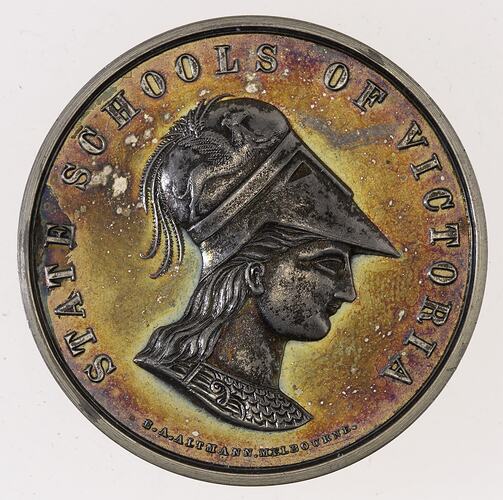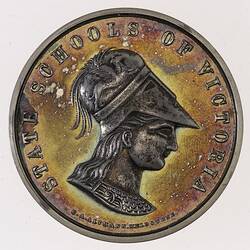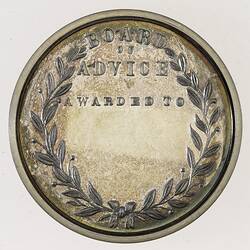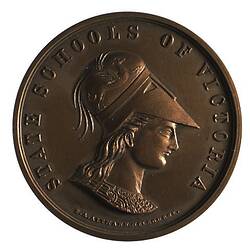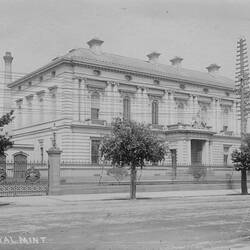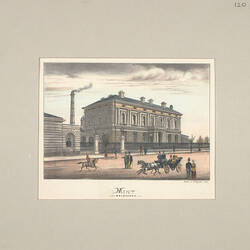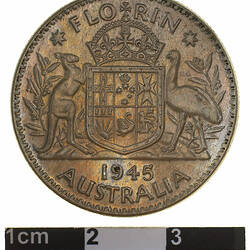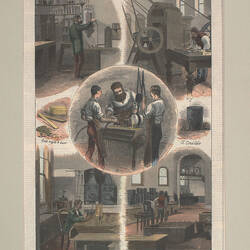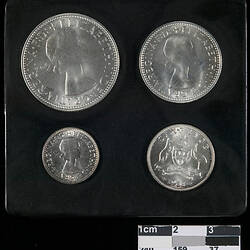Summary
Australia Victoria
Medal - Education Department Board of Advice Large Silver Award c 1875 (AD)
Mint: Melbourne
Other Details: Medal commissioned by the Victorian Education Department Board of Advice and designed by Melbourne jeweller, engraver and die-sinker Ernst A. Altmann. When free and compulsory education were first introduced in Victoria in 1873 the local management of schools in each area was facilitated through a Board of Advice, a forerunner of today's School Councils. Each Board controlled a number of schools within a specified school district. The responsibility of Board members included checking on the condition and management of schools (including sporting facilities and books), inducing children to attend school, recommending scholarships, suspending teachers in cases of misconduct and identifying the need for new schools. Each Board of Advice consisted of five to seven people, elected by ratepayers living in the school district. All Boards of Advice were abolished under the Education Act 1910. The role performed by these Boards was effectively assumed by a new body known as the School Committee which was to be established within every school.
Physical Description
An unissued specimen silver prize medal (37 mm diameter) featuring a profile bust the ancient Greek goddess Athena facing right wearing a Corinthian helmet decorated with a griffin.
Obverse Description
Profile bust the ancient Greek goddess Athena facing right, wearing a Corinthian helmet decorated with a griffin; around, STATE SCHOOLS OF VICTORIA; below in small letters, E.A. ALTMANN. MELBOURNE.
Reverse Description
Olive wreath; at top, BOARD / OF / ADVICE / AWARDED TO
Edge Description
Plain
Significance
When free and compulsory education were first introduced in Victoria in 1873 the local management of schools in each area was facilitated through a Board of Advice, a forerunner of today's School Councils. Each Board controlled a number of schools within a specified school district. The responsibility of Board members included checking on the condition and management of schools (including sporting facilities and books), inducing children to attend school, recommending scholarships, suspending teachers in cases of misconduct and identifying the need for new schools. Each Board of Advice consisted of five to seven people, elected by ratepayers living in the school district. All Boards of Advice were abolished under the Education Act 1910. The role performed by these Boards was effectively assumed by a new body known as the School Committee which was to be established within every school. -Education Act 1872; Education Act 1910; Public Records Office, includng web site http://www.prov.vic.gov.au/archivesvictoria/t1tbmain.asp (Boards of Advice). -D. Tout-Smith 23/10/2003.
More Information
-
Collecting Areas
-
Acquisition Information
Transfer from Melbourne Branch of Royal Mint, 1978
-
Date Issued
circa 1873-1910 AD
-
Issued By
Education Department of Victoria, Victoria, Australia, circa 1875
-
Mint
-
Artist
Ernst August Altmann, Melbourne, Greater Melbourne, Victoria, Australia, circa 1875
-
Inscriptions
Obverse: STATE SCHOOLS OF VICTORIA E.A. ALTMANN. MELBOURNE. Reverse: BOARD / OF / ADVICE / AWARDED TO
-
Series
-
Material
Silver
-
Axis
12
-
Classification
-
Category
-
Discipline
-
Type of item
-
Dimensions
37 mm (Outside Diameter), 34.01 g (Weight)
-
Shape
Round
-
Keywords
